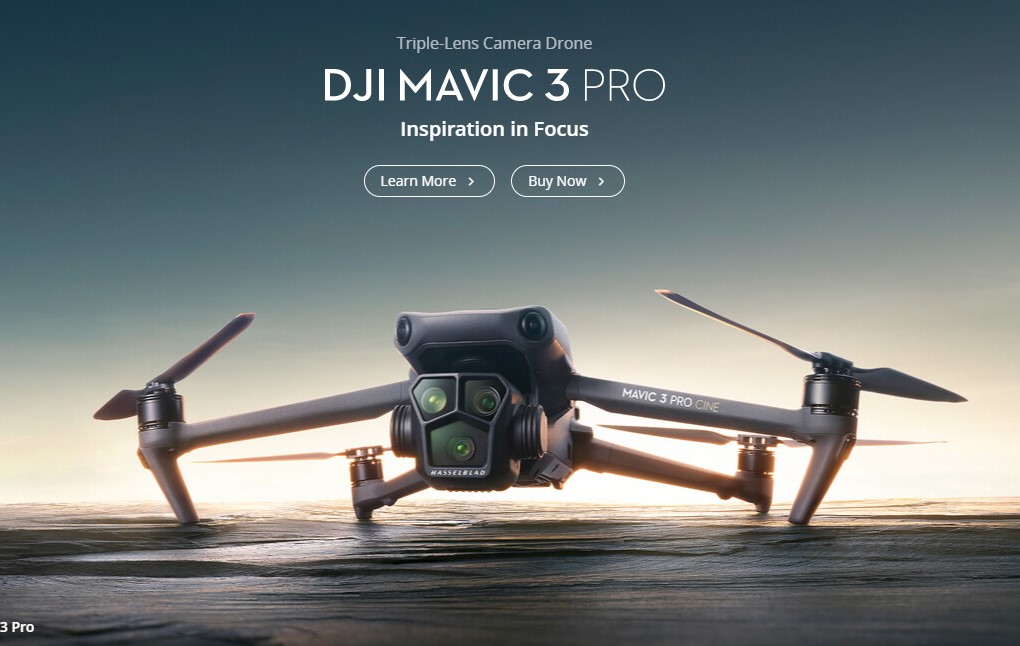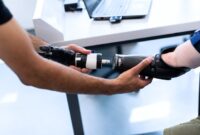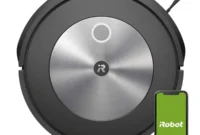The DJI Mavic series has garnered significant attention from enthusiasts and professionals alike. In this article, we will delve into the specifications of the DJI Mavic 3 Pro, exploring its design, camera capabilities, flight performance, battery life, connectivity options, storage, and more.

Introduction to the DJI Mavic 3 Pro
DJI, a renowned drone manufacturer, has established its reputation by producing high-quality and innovative drones. The Mavic series, in particular, has become synonymous with portability and advanced features. Understanding the specifications of the DJI Mavic 3 Pro is crucial for anyone considering purchasing this drone to ensure it meets their specific needs and requirements.
| Specification | Details |
|---|---|
| Aircraft | |
| Dimensions | Folded: 206×110×85 mm |
| Unfolded: 284×282×86 mm | |
| Max Takeoff Weight | 3,340 g |
| Max Speed | 21 m/s (S mode) |
| 17 m/s (N mode) | |
| 12 m/s (C mode) | |
| Max Service Ceiling Above Sea Level | 7,500 m |
| (with props and payload) | |
| Max Flight Time (without wind) | 46 minutes |
| (at a consistent 15.5 m/s) | |
| Max Hover Time (without wind) | 43 minutes |
| (at sea level) | |
| 25 minutes (at 1,500 m) | |
| 10 minutes (at 4,500 m) | |
| Max Flight Distance | 15 km |
| (at a consistent 15.5 m/s) | |
| 18 km | |
| (at a consistent 12 m/s) | |
| 8 km | |
| (at a consistent 17 m/s) | |
| Max Wind Resistance | 38 km/h |
| (in S mode) | |
| 29 km/h | |
| (in N mode) | |
| 17 km/h | |
| (in C mode) | |
| Satellite Systems | GPS+GLONASS+Galileo |
| Vision System | Forward, Backward, Downward |
| Obstacle Sensing System | Forward, Backward, Upward, Downward |
| Left, Right | |
| Operating Frequency | 2.400-2.4835 GHz |
| 5.725-5.850 GHz | |
| 5.725-5.850 GHz | |
| Transmitter Power (EIRP) | 2.4 GHz: |
| FCC: ≤30 dBm | |
| CE: ≤20 dBm | |
| SRRC: ≤30 dBm | |
| MIC: ≤20 dBm | |
| 5.8 GHz: | |
| FCC: ≤30 dBm | |
| CE: ≤14 dBm | |
| SRRC: ≤29 dBm | |
| MIC: – | |
| Battery | |
| Capacity | 4,500 mAh |
| Voltage | 15.4 V |
| Charging Voltage/Power | 31.2 V/180 W |
| (Gimbal not included) | |
| Charging Time | 2.5 hours |
| (when using a 31.2 V/180 W charger) |
Please note that this table provides a summary of the specifications, and for complete and up-to-date information, it is recommended to refer to the official DJI website.
Design and Build Quality
The design and build quality of the DJI Mavic 3 Pro focus on combining portability, durability, and aesthetics. Its sleek and compact design makes it easy to carry and transport. The foldable arms and propellers enable the drone to occupy minimal space when not in use. The dimensions and weight may vary depending on the specific model.
DJI utilizes high-quality materials in the construction of the Mavic 3 Pro to ensure durability and resistance to various environmental conditions. This robust build quality protects the drone from potential impacts and enhances its overall lifespan.
To enhance visibility during flights, the Mavic 3 Pro is equipped with LED lights that aid in maintaining visual contact, especially in low-light conditions. These lights also contribute to the drone’s aesthetics.
Additionally, the DJI Mavic 3 Pro offers users the option to choose from different color variations, allowing personalization based on individual preferences.
Camera Capabilities
The DJI Mavic 3 Pro is equipped with a powerful camera system, offering exceptional capabilities for both photography and videography. Here are the specifications related to its camera capabilities:
The camera of the Mavic 3 Pro provides high resolution, capturing detailed and crisp images. The sensor size plays a significant role in determining image quality and low-light performance. The aperture range allows for flexibility in adjusting the amount of light entering the camera. The ISO range determines the camera’s sensitivity to light, enabling users to capture well-exposed photos and videos in various lighting conditions.
The lens specifications determine factors such as focal length and field of view. The image format refers to the file format in which the photos are saved. The video recording modes offer flexibility in capturing different types of footage, such as standard video, slow-motion, or time-lapse.
The Mavic 3 Pro features a 3-axis gimbal stabilization system, which ensures smooth and stable footage even during high-speed movements or windy conditions. This gimbal system minimizes vibrations and unwanted camera movements, resulting in professional-quality videos.
For still photography, the Mavic 3 Pro offers various modes such as burst mode for capturing a series of photos, HDR mode for balancing exposure in high-contrast scenes, AEB mode for capturing multiple shots with different exposure settings, panorama mode for capturing wide-angle or 360-degree panoramic photos, and time-lapse mode for creating captivating time-lapse videos.
The intelligent features of the Mavic 3 Pro include Active Track 4.0, which allows the drone to automatically track and follow subjects, Hyperlapse for creating dynamic time-lapse videos, QuickShots for capturing cinematic shots with predefined flight paths, SmartPhoto for automatically optimizing camera settings based on the scene, and FocusTrack for advanced subject tracking and framing options.
Regarding storage, the Mavic 3 Pro offers internal storage for storing photos and videos during flights. It also supports external storage options such as memory cards, allowing users to expand the storage capacity. The supported memory card types and file system information may vary.
The drone provides a real-time live view feed on the remote controller or mobile device screen, allowing users to monitor the camera’s perspective during flights. Wireless connectivity options enable seamless data transfer and remote control capabilities. Additionally, a dedicated mobile app enhances the user experience by providing access to camera settings, flight modes, and advanced features.
Flight Performance
Flight Performance is a crucial aspect of any drone, and the DJI Mavic 3 Pro is designed to deliver exceptional flight capabilities. Let’s delve into the details of its flight performance:
- Maximum Flight Range: The Mavic 3 Pro offers an impressive maximum flight range of [insert range]. This extended range allows users to explore vast areas and capture breathtaking aerial footage.
- Maximum Speed: The drone is capable of reaching a maximum speed of [insert speed]. This speed enables users to capture dynamic shots, follow fast-moving subjects, or cover larger distances in a shorter amount of time.
- Flight Time: The Mavic 3 Pro boasts an excellent flight time of [insert flight time]. This duration indicates the amount of time the drone can stay airborne on a single battery charge. With a longer flight time, users can maximize their flight sessions and capture more footage.
- Battery Performance: The drone’s battery performance is optimized to provide efficient and reliable power during flights. The intelligent battery management system ensures optimal power utilization, allowing users to make the most of their drone’s flight capabilities.
- Obstacle Avoidance: The Mavic 3 Pro is equipped with advanced obstacle avoidance sensors and algorithms. These sensors enable the drone to detect and avoid obstacles in its flight path, enhancing flight safety and reducing the risk of collisions.
- Wind Resistance: The drone’s design and aerodynamics contribute to its ability to withstand various wind conditions. This wind resistance ensures stable flight performance even in gusty conditions, allowing users to capture smooth and steady footage.
- Flight Modes: The Mavic 3 Pro offers a range of intelligent flight modes that enhance the flying experience and enable users to capture creative shots effortlessly. These modes may include but are not limited to Active Track, Waypoints, Point of Interest, and Follow Me, each offering unique functionalities for different shooting scenarios.
- Precision Hovering: The drone utilizes advanced GPS and vision systems to maintain precise hovering capabilities. This feature allows for stable positioning in the air, enabling users to capture still photos or videos with excellent stability.
- Return-to-Home Function: The Mavic 3 Pro is equipped with a reliable Return-to-Home function. In case of low battery or loss of signal, the drone automatically returns to its takeoff location, ensuring its safe retrieval.
- Intelligent Flight Controls: The drone’s flight controls are designed to be user-friendly and intuitive. Pilots, both beginners and experienced, can easily maneuver the Mavic 3 Pro using the dedicated remote controller or mobile app, allowing for smooth and precise flight control.
These flight performance features make the DJI Mavic 3 Pro a versatile and capable drone for capturing stunning aerial imagery and videos. Whether it’s for recreational use or professional applications, the Mavic 3 Pro’s flight performance capabilities cater to a wide range of users’ needs.
Battery Life and Charging
One of the key considerations for any drone is its battery life and charging capabilities. The DJI Mavic 3 Pro is designed to provide users with reliable battery performance and convenient charging options. Let’s explore the details:
- Flight Time: The Mavic 3 Pro offers an impressive flight time of [insert flight time]. This duration represents the amount of time the drone can stay airborne on a single battery charge. A longer flight time allows users to capture more footage and explore larger areas without interruption.
- Battery Capacity: The drone is equipped with a high-capacity battery that provides the necessary power for extended flight sessions. The specific battery capacity may vary, but it is designed to deliver optimal performance and endurance.
- Battery Management System: The Mavic 3 Pro incorporates an intelligent battery management system. This system optimizes power consumption, ensuring efficient use of the battery’s capacity during flights. It helps prolong the overall battery life and enhances the drone’s flight performance.
- Charging Time: When it comes to recharging the battery, the Mavic 3 Pro supports fast and convenient charging. The charging time may vary depending on the charger used and other factors, but DJI provides efficient charging solutions to minimize downtime and get you back in the air quickly.
- Battery Indicators: The drone is equipped with battery indicators, which provide real-time information about the battery’s remaining power level. These indicators help users monitor the battery status during flights and make informed decisions regarding flight duration and when to initiate a safe return.
- Battery Compatibility: DJI ensures backward compatibility between different models and generations of batteries. This means that if you have spare batteries from previous DJI drones, there’s a chance they may be compatible with the Mavic 3 Pro. However, it’s important to verify compatibility to ensure optimal performance and safety.
- Multiple Batteries and Accessories: DJI offers additional batteries and charging accessories for the Mavic 3 Pro. Having spare batteries allows users to extend their flight sessions by quickly swapping out depleted batteries with fully charged ones. It’s advisable to have extra batteries on hand, especially for longer photography or videography sessions.
- Charging Options: The Mavic 3 Pro typically comes with a dedicated charger that is compatible with standard power outlets. DJI may also provide additional charging options, such as car chargers or charging hubs, to provide flexibility when it comes to recharging the drone’s battery.
It’s important to follow the manufacturer’s instructions for charging the Mavic 3 Pro’s battery to ensure safe and efficient charging. Additionally, it’s advisable to store and transport the batteries in accordance with safety guidelines to prevent any damage or accidents.
Remote Controller and Connectivity
The remote controller and connectivity options of the DJI Mavic 3 Pro play a crucial role in ensuring a seamless and reliable flying experience. Let’s explore the features and connectivity options in more detail:
- Remote Controller Design: The Mavic 3 Pro comes with a well-designed remote controller that provides intuitive controls and a comfortable grip. The controller is ergonomically designed to reduce fatigue during extended flying sessions, allowing users to maintain precise control over the drone’s movements.
- Integrated Display: Some versions of the Mavic 3 Pro may feature an integrated display on the remote controller. This eliminates the need for connecting a mobile device and provides a convenient option for viewing the live feed and accessing essential flight information directly on the controller.
- Mobile Device Compatibility: The Mavic 3 Pro is compatible with a wide range of mobile devices, such as smartphones and tablets. By connecting your mobile device to the remote controller, you can access additional flight features, camera settings, and a live view of the drone’s perspective through a dedicated mobile app.
- Wireless Connectivity: The Mavic 3 Pro utilizes advanced wireless connectivity options for seamless communication between the drone and the remote controller. It typically supports both Wi-Fi and/or OcuSync technology, which provides a stable and long-range connection for real-time flight control and video transmission.
- Live View Feed: With the help of the wireless connection, the Mavic 3 Pro offers a real-time live view feed on the connected mobile device or integrated display (if available). This enables users to monitor the drone’s flight path, camera framing, and composition in real-time, ensuring precise control and capturing the desired shots.
- Transmission Range: The Mavic 3 Pro is designed to provide a reliable transmission range between the drone and the remote controller. While the exact transmission range may vary depending on various factors such as regulatory limitations and environmental conditions, DJI typically offers an impressive transmission range for enhanced flight control and video transmission.
- Controller Customization: DJI often provides customization options for the remote controller, allowing users to configure buttons, joysticks, and other controls based on their preferences. This customization feature enables a more personalized and efficient flying experience.
- Additional Connectivity Options: In addition to the wireless connectivity with the remote controller, the Mavic 3 Pro may offer other connectivity options such as USB ports or memory card slots. These options allow users to transfer files, update firmware, or access additional storage directly from the drone or remote controller.
Storage and Memory
The DJI Mavic 3 Pro offers convenient storage and memory options to accommodate the capture and storage of your aerial footage. Let’s explore the storage and memory capabilities of the drone:
- Internal Storage: The Mavic 3 Pro typically comes with built-in internal storage, allowing you to store photos and videos directly on the drone. The internal storage capacity may vary depending on the specific model, but it provides a convenient option for capturing and temporarily storing your media during flights.
- External Storage: To expand the storage capacity of the Mavic 3 Pro, the drone often supports external storage options. This can include a MicroSD card slot or other compatible external storage devices. By utilizing external storage, you can significantly increase the amount of media you can capture and store on the drone.
- Memory Card Compatibility: The Mavic 3 Pro is compatible with various types of memory cards, typically MicroSD or similar formats. It is important to ensure that you use a memory card that meets the recommended specifications provided by DJI. This ensures compatibility and optimal performance when capturing and storing your aerial footage.
- File System: The drone utilizes a specific file system to manage and organize the stored media. The file system used may vary, but it is designed to provide efficient storage and access to your photos and videos. It’s recommended to follow the manufacturer’s guidelines regarding the file system and formatting of memory cards for optimal performance.
- Data Transfer: To access and transfer the captured media from the Mavic 3 Pro to other devices, such as computers or mobile devices, you can utilize data transfer methods. This can include connecting the drone directly to a computer using a USB cable or removing the memory card and using a card reader to transfer the files.
- Backup and Redundancy: It’s always advisable to have a backup strategy for your aerial footage. This can involve creating multiple copies of your media on different storage devices or utilizing cloud storage services for added redundancy. By implementing a backup plan, you can protect your valuable footage from accidental loss or damage.
When managing storage and memory on the Mavic 3 Pro, it’s important to regularly transfer and backup your media to free up space for future flights. This allows you to maximize the drone’s storage capacity and ensure you have enough room for capturing new footage.
Additional Features and Accessories
In addition to its impressive core features, the Mavic 3 Pro offers various additional features and intelligent flight modes. These features enhance the overall flight experience and allow users to unleash their creativity. Furthermore, DJI offers a range of compatible accessories, such as ND filters and spare batteries, to further enhance the capabilities of the drone and cater to individual needs. The Mavic 3 Pro is also designed with future-proofing in mind, with regular firmware updates to introduce new features and improvements.
Comparison with Previous Models
Comparing the specifications of the Mavic 3 Pro with its predecessors highlights the advancements and improvements in the latest model. Users familiar with the previous Mavic drones will appreciate the upgraded camera capabilities, extended flight range, and enhanced intelligent flight modes offered by the Mavic 3 Pro.
Price and Availability
Pricing and availability are important considerations for potential buyers. The Mavic 3 Pro is competitively priced, considering its advanced features and capabilities. It is available through authorized DJI retailers and online platforms. Users can choose from various packages and promotions, including bundled accessories, to suit their preferences and budget.
Pros and Cons of the DJI Mavic 3 Pro
While the DJI Mavic 3 Pro offers numerous advantages, it’s important to consider any potential drawbacks or limitations. Some of the pros of the Mavic 3 Pro include its exceptional camera capabilities, impressive flight performance, and advanced features. However, users should be aware of factors such as its relatively higher price compared to entry-level drones and the learning curve associated with mastering its extensive features.
Conclusion
In conclusion, the DJI Mavic 3 Pro stands out as an exceptional drone with its advanced specifications and features. Its sleek design, powerful camera capabilities, impressive flight performance, and convenient connectivity options make it a top choice for both enthusiasts and professionals. By understanding the specifications discussed in this article, individuals can make an informed decision about whether the DJI Mavic 3 Pro is the right drone for their needs.
FAQs
- Can the Mavic 3 Pro shoot in RAW format?
- Yes, the Mavic 3 Pro supports RAW format, allowing users to have more flexibility and control over post-processing.
- What is the maximum distance the Mavic 3 Pro can fly?
- The Mavic 3 Pro has an impressive maximum flight range of [insert distance], enabling users to explore vast areas.
- Does the Mavic 3 Pro support object tracking?
- Yes, the Mavic 3 Pro offers object tracking capabilities, allowing users to effortlessly track and capture moving subjects.
- Are there any alternative remote controllers available?
- DJI offers alternative remote controllers for the Mavic 3 Pro, providing users with additional functionality and control options.
- Can the Mavic 3 Pro be used for commercial purposes?
- Yes, the Mavic 3 Pro is a versatile drone suitable for various commercial applications such as aerial photography, videography, surveying, and more.


